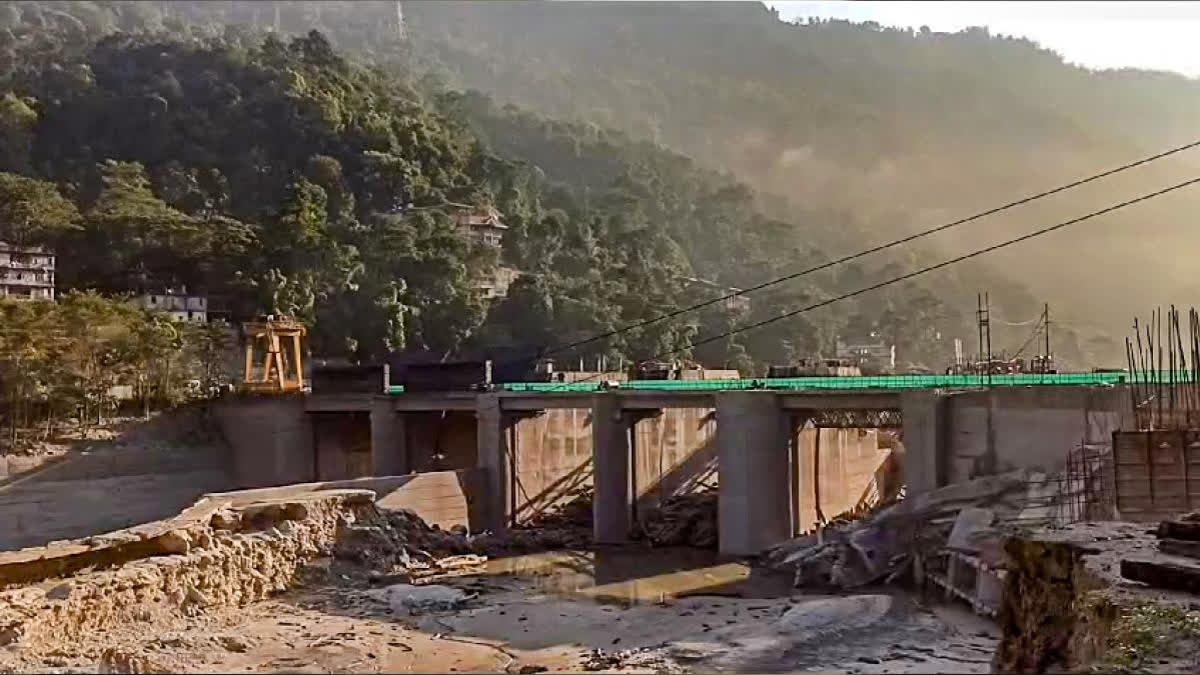Dams are justified in the national interest, but people from Narmada Valley to Uttarakhand have realised their destructive potential. While Socialist Party (India) does care about development but not at the cost of life, livelihood and nature.
There are more than 169 proposed dams in Arunachal Pradesh (AP), which will exploit nature and will be a threat to people. It is imperative to highlight that the dams in AP induce floods in downstream Assam. As Arunachal Pradesh is an earthquake-prone zone and with the change in climate, melting glaciers become more threat to its people and the downstream Assam. There are many formations of new glacial lakes with thousands of lakes existing already in the mountains of AP.
China is constructing a 60,000-megawatt dam on the Yarlung Tsangpo River on the Medog border in Tibet across from Arunachal Pradesh. Tsangpo becomes Siang as it enters AP. The reason being given for the construction of the 11,000-MW Upper Siang project by the National Hydroelectric Power Corporation (NHPC) is that it will act as a reservoir to counter the effects of potentially reduced flow caused by the Chinese super dam, three times the size of biggest dam – Three Gorges on Yangtze River.
How can a dam counter another dam on the same river? If anything, the Arunachal Pradesh dam will reduce the flow of water to Assam, where the river becomes Brahmaputra, just as the Chinese dam will reduce the flow to Arunachal Pradesh. The Chinese dam will be a disaster, the Upper Siang will double that disaster, not mitigate it as the Indian authorities would like us to believe.
Meanwhile, the Dibang valley, home to the 2,880 MW Dibang multipurpose dam and 3097 MW Etalin Hydro Project, faces increased risks due to climate-induced changes. The breach at 60 metre Teesta dam in Sikkim on October 4, 2023, is a recent example of how hydroelectric projects are prone to accidents. We cannot afford to ignore these lessons.
Meanwhile, developers like NHPC mislead people. The dam-induced floods in Assam have devastated the public downstream. Assam flood relief is a mere damage control. The only solution to prevent such tragedy is to not build dams upstream. The Indian government instead of building a dam should channel its energy in trying to stop China from building a dam further upstream.
Agitation and protest of the various northeastern-based activists are deliberately being ignored by the government-owned NHPC, state government and Union government. Yet, campaigns against the proposed dam 11,000 MW Upper Siang multipurpose storage project are going on, in light of its possible adverse environmental repercussions.
Also, the affected villages of the Siang were not consulted prior to the allocation of CSR funds and were unaware of the related notification until 1 March 2024. As per the Companies Act, 2013, questions have been raised on the allocation of the CSR funds in Siang by NHPC. The activists opposing the project have condemned the CSR fund allocation of 16.61 crores, stating that it would encourage corrupt practices and irresponsible district administration. We also demand transparency from the departments involved in the CSR scheme. Despite numerous official objections, the survey attempts continue. The Siang Indigenous Farmers’ Forum (SIFF) has expressed strong disapproval of the model villages sanctioned by NHPC.
On 8 July 2024 social activists Advocate Ebo Mili and DuggeApang were detained under section 128 of the Bharatiya Nagrik Suraksha Sanhita (BNSS) to suppress their right to free expression, which is clearly a violation of their fundamental right as part of the Constitution of India. They were released only after the completion of legal formalities. We condemn such high-handed action by the state.
The government must explore renewable energy alternatives like solar and wind in order to fulfil its energy needs instead of pursuing the destructive hydroelectric option. Moreover, any energy solution must be worked out in partnership with the indigenous people ensuring that they exercise ultimate ownership rights over any enterprise. The Arunachal Pradesh State Hydropower Policy 2008 must be amended to honour the rights of indigenous people rather than benefit the profit-seeking corporates.
Socialist Party (India) supports civil society groups such as SIFF, Dibang Resistance, and Northeast Human Rights which strongly oppose such large-scale mega dams in Arunachal Pradesh. We will support any democratic peaceful protest by the people against such disaster projects which are meant only to benefit the unethical nexus of corporates, contractors, bureaucrats and politicians.
(Disclaimer: The opinions expressed in this article are those of the writer. The facts and opinions expressed here do not reflect the views of ETV Bharat)



